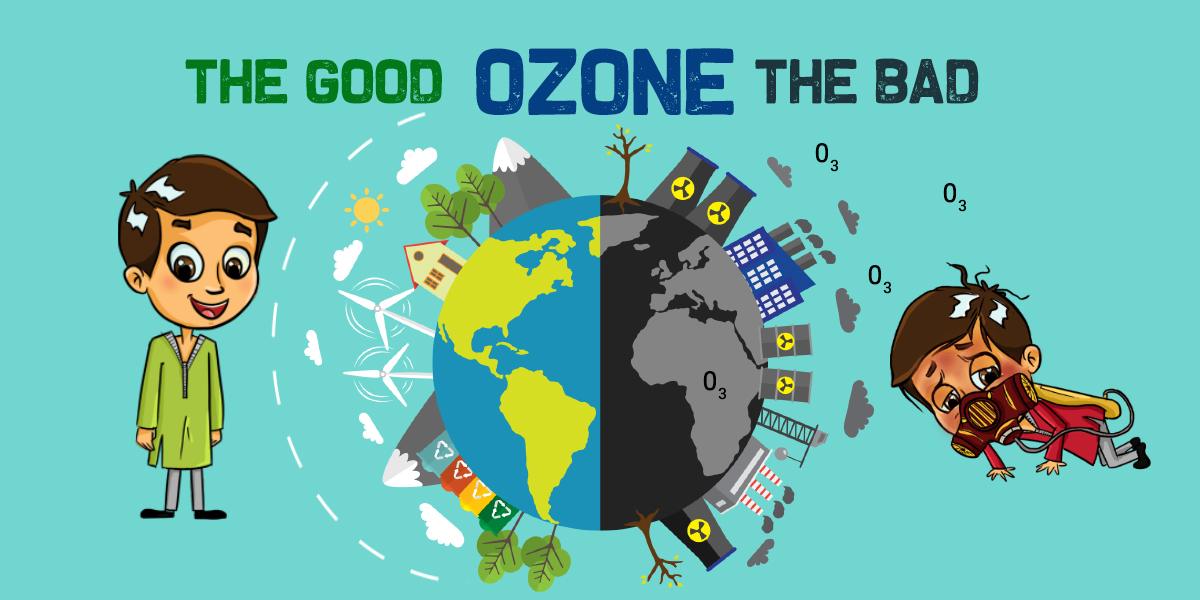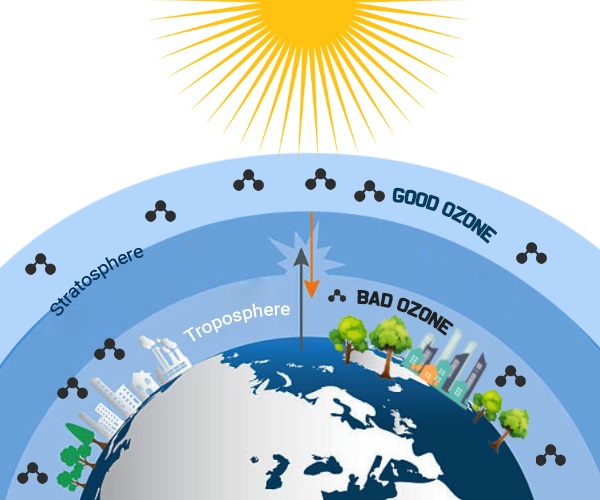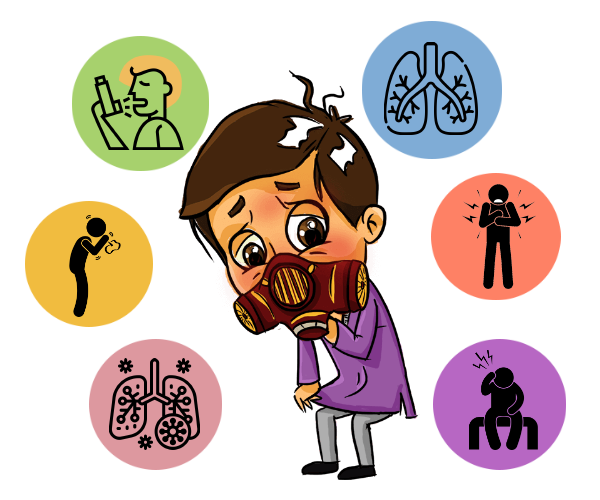As per the Center for Disease Control and Prevention (CDC), ozone is one of the six most common air pollutants. How is it a pollutant? Isn’t ozone our saviour? Is ozone harmful if found in the ambient air? Wait, is ozone good, or is it not? Don’t scratch your head. Read more to find out.
What exactly is ozone, you may think? Well, simply put, ozone is nothing but a form of oxygen. Three atoms of oxygen bind together to form gaseous ozone. Now whether it is good or bad depends on where it is found. Yes, the location determines the apparent ‘behaviour’ of ozone.
Sitting between about 10 and 50 km of altitude is the natural ozone. It is also referred to as the stratospheric ozone, and it makes up about 99% of the total ozone found on the Earth. Atmospheric oxygen – O2 – at this altitude, disintegrate into oxygen atoms due to the action of sunlight. These single atoms may either react with each other to re-form O2 or combine with O2 to form ozone (O3). This stratospheric ozone makes up the protective ozone layer that filters out and protects all the living forms from the harmful ultraviolet radiation of the sun. Without ozone, the intense solar UV radiation would sterilize the Earth’s surface. This utility makes the stratospheric ozone heroic. The ‘good-natured’ ozone gets jeopardized when it reacts with molecules containing nitrogen, hydrogen, chlorine, or bromine. Some of these occur naturally, while others have been created by us.
But when does this good become harmful?
The ozone is deemed bad when its concentration in the lower atmosphere (troposphere) increases. Direct exposure of the living with the ground-level ozone (GLO) renders this hero villainous. There is no source on the surface of the Earth that directly emits ozone, which means that it does not occur naturally. It is formed as the result of a photochemical reaction between oxides of nitrogen and volatile organic compounds (VOCs). The pollutants emitted by vehicles, power plants, industrial boilers and precipitators, refineries, chemical industries, and others react in the presence of sunlight to form ozone. This facilitates a hike in ozone levels on hot sunny days in an urban environment. But even rural areas can experience the increase because it can travel long distances. A powerful oxidant, it is detrimental to plants as well as animals (including humans).
How is the presence of ozone in ambient air harmful to ecology?
High levels of ozone affect sensitive vegetation and ecosystems. It inhibits the opening of stomatal pores on the leaves of the plant. It also interferes with photosynthesis as it limits the amount of carbon dioxide processed and converted to oxygen. Ozone also reduces the growth and survivability of the seedlings and increases the susceptibility to diseases and pests. It reduces the agricultural crop and commercial forest yields. Dicot species like soybean, cotton, and peanut, etc. are more vulnerable to yield loss than monocots (such as sorghum, corn, and wheat).
Why should we be concerned about excess ozone in ambient air?
The effect of ozone can be observed on our health. It may also affect us without any noticeable signs or symptoms. Medically speaking, people with specific genetic characteristics and those with reduced intake of nutrients Vitamin C and E are at greater risk from ozone exposure. Ozone can cause morphological, functional, immunological, and biochemical alterations. Ozone Pollution can be observed in humans through the following visible signs, ranging from moderate to severe in terms of impact depending upon the duration of exposure –
- Chest pain
- Cough and throat irritation
- Inflammation in airway
- Asthma and bronchitis
- Emphysema
- Reduced lung function
Ozone Pollution is more dangerous for those who are already suffering from these conditions because ozone amplifies the severity. Chronic exposure can also lead to premature fatality in people with respiratory or heart diseases. Studies suggest that prenatal or childhood exposure to ozone enhances the chance of autism by ten times in at-risk populations. Due to its high reactivity and unstable nature, it can even cause damage at the genetic level by altering our DNA. So yes, all this should be enough to alarm us about the bad ozone.
Conclusion
Central Pollution Control Board (CPCB) has set standards to regulate the quality of ambient air. As per the National Ambient Air Quality Standards (NAAQS) of India, the limit of ozone in the ambient air for an 8-hours average is set as 100 micrograms per cubic meter.
Thinking how can we check something you can’t see? If you want to check your ambient air for the presence of ozone beyond the stipulated limit, click here.










